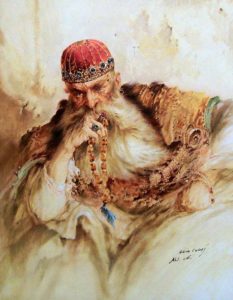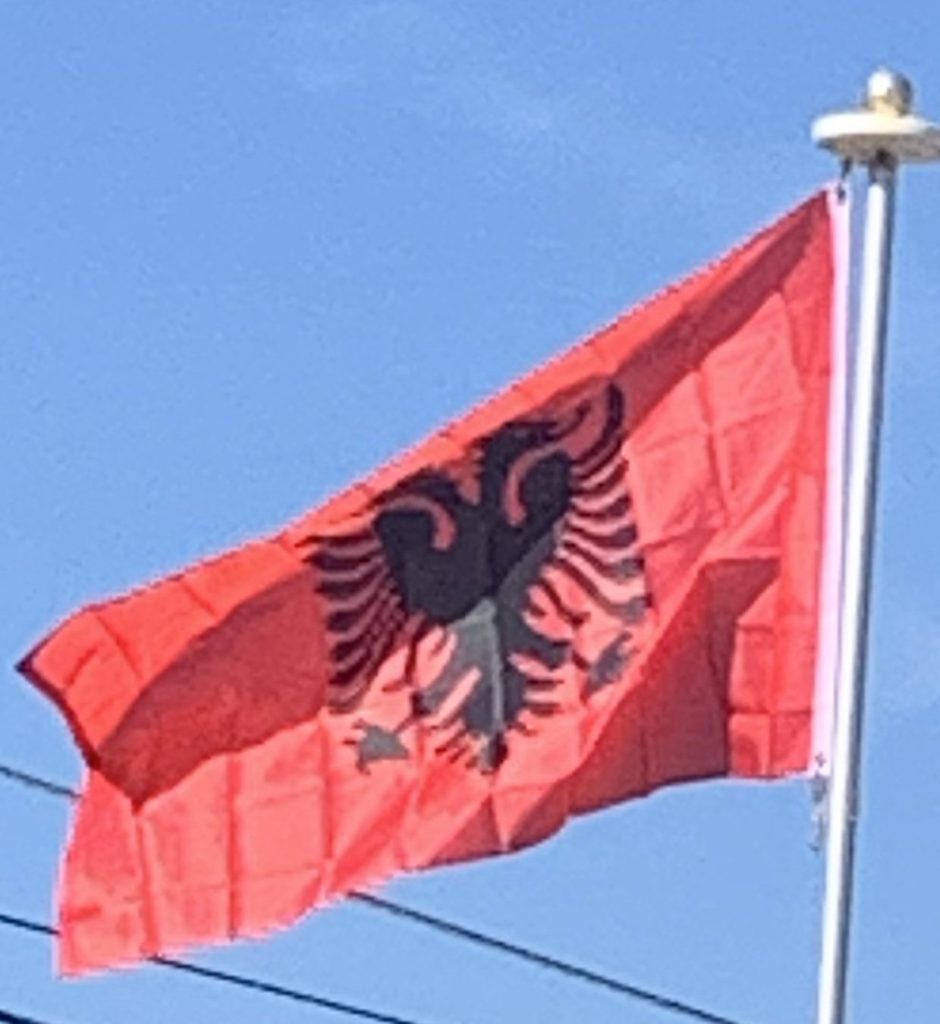In 1443, a great and longstanding revolt broke out under the lead of Gjergj Kastrioti Skanderbeg that lasted until 1479, many times defeating major Ottoman armies led by Murad II and Mehmed II. Skanderbeg united initially the princes of Albania and later on established a centralized authority over most of the non-conquered territories becoming the ruling Lord of Albania.
Skanderbeg pursued relentlessly but rather unsuccessfully to create a European coalition against the Ottomans. He thwarted every attempt by the Ottomans to regain Albania which they envisioned as a springboard for the invasion of Italy and Western Europe. His unequal fight against the mightiest power of the time, won the esteem of Europe as well as some financial and military aid from Naples, Venice, Sicily and the Papacy.
When the Ottomans were gaining a firm foothold in the region, Albanian towns were organised into four principal sanjaks. The government fostered trade by settling a sizeable Jewish colony of refugees fleeing persecution in Spain. The city of Vlorë saw passing through its ports imported merchandise from Europe such as velvets, cotton goods, mohairs, carpets, spices and leather from Bursa and Constantinople. Some citizens of Vlorë even had business associates throughout Europe.
As Muslims, some Albanians attained important political and military positions within the empire and culturally contributed to the wider Muslim world. Enjoying this privileged position, Muslim Albanians held various high administrative positions with over two dozen Albanian Grand Viziers among others Köprülü Mehmed Pasha, Köprülü Fazıl Ahmed and Muhammad Ali Pasha.

The most significant impact on the Albanians was the gradual Islamisation process of a large majority of the population, although it became widespread only in the 17th century. The process was an incremental one, commencing from the arrival of the Ottomans. Timar holders, the bedrock of early Ottoman control in Southeast Europe, were not necessarily converts to Islam, and occasionally rebelled, with the most famous of these being Skanderbeg.
Mainly Catholic Albanians converted in the 17th century, while the Orthodox Albanians followed suit mainly in the following century. Initially confined to the main city centres of Elbasan and Shkodër, by this period the countryside was also embracing the new religion. The motives for conversion according to some scholars were diverse, depending on the context. The lack of source material does not help when investigating such issues.
National Renaissance:
The origins of the Albanian Renaissance can be traced back to around the 19th century that was a very difficult period for Albania. During the period, the modern culture of Albania flourished especially in literature and art as well inspired by romanticism and enlightenment.
The victory of Russia over the Ottoman Empire following the Russian-Ottoman War resulted the execution of the Treaty of San Stefano that overlooked to assign Albanian-populated regions to the Slavic neighbors. The United Kingdom as well as Austria-Hungary consequently, blocked the arrangement and caused the Treaty of Berlin. At this point, Albanians started to organize themselves with the aim to protect and unite the Albanian-populated regions into a unitary nation. This led to the formation of the League of Prizren in the old town of Prizren.
